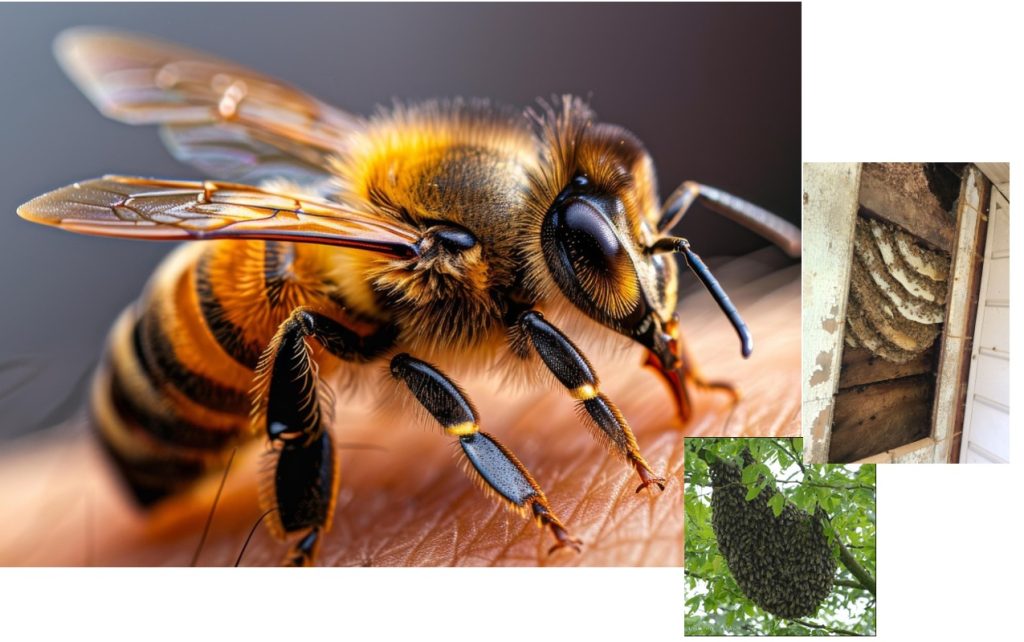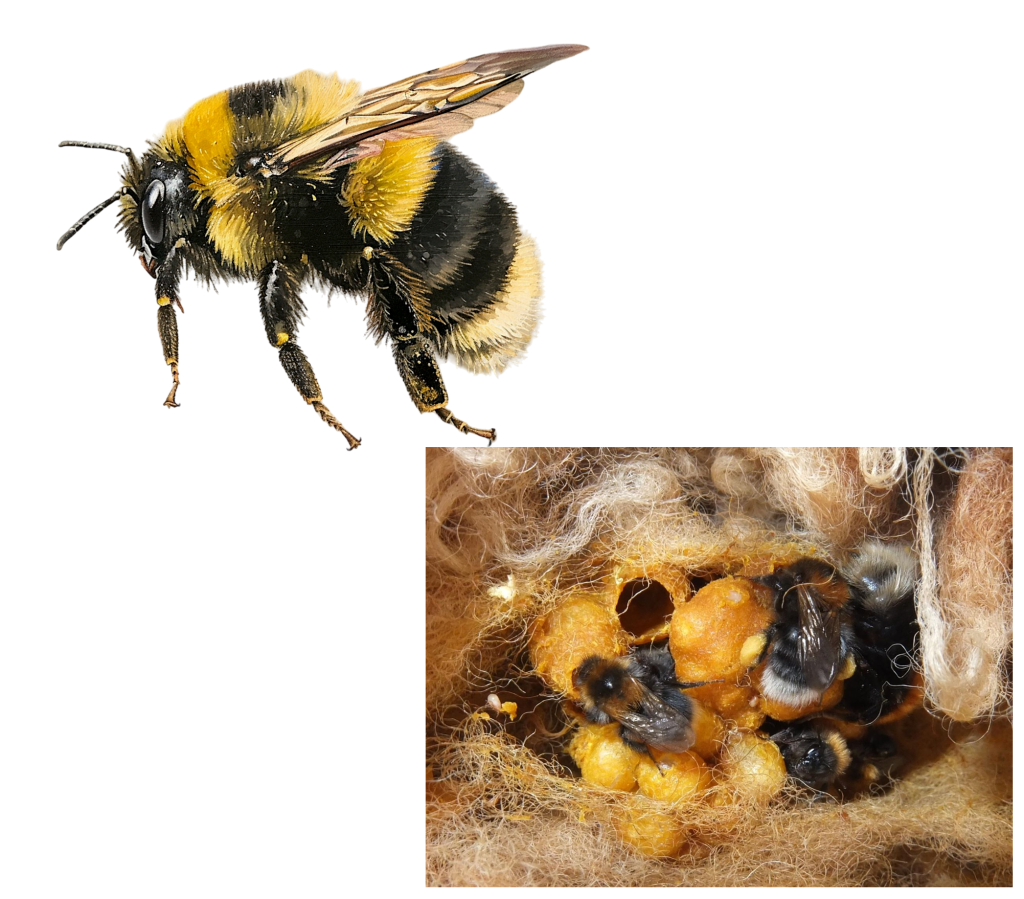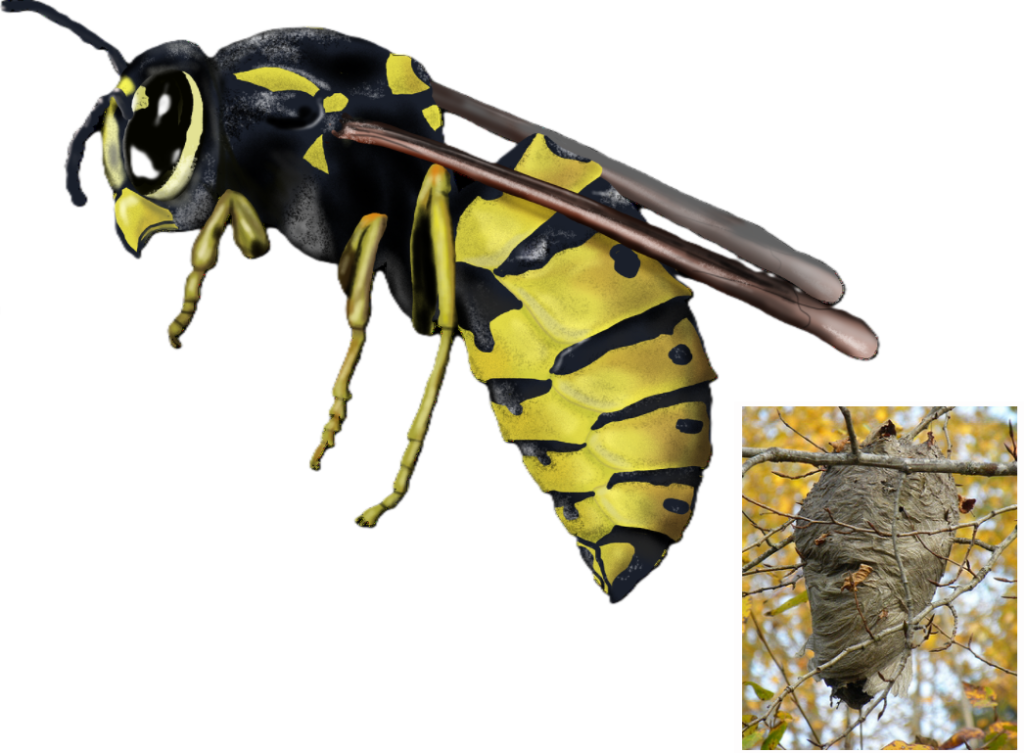Report a Swarm or Remove Bumblebees
What is a Swarm?
Swarming is the process by which a new honey bee colony is formed when the queen bee leaves the colony with a large group of worker bees. In the prime swarm, about 60% of the worker bees leave the original hive location with the old queen. This swarm can contain thousands to tens of thousands of bees. Swarming is mainly a spring phenomenon, usually within a two- or three-week period depending on the locale, but occasional swarms can happen throughout the producing season. Secondary afterswarms may happen but are rare. Afterswarms are usually smaller and are accompanied by one or more virgin queens. Sometimes a beehive will swarm in succession until it is almost totally depleted of workers.
What do I do?
First: Do not panic.
Second: Be calm and carefully observe the insects. Compare the insects in this app. Which insects are they?
Third: Call or text us at (306) 551-7553 Have these details handy:
- How do we get to the swarm? (address or rural land location)
- How long has it been there?
- Where is it? (in a tree, in a shed, under a deck, in a wall, etc.)
- Do we need a ladder to get to it? If so, how tall of a ladder?
- Is there a nest visible, such as a grey paper nest or honey comb?
- What is your phone number?
- Is the swarm on your property?
Please do not spray these bees with anything!
Please note that if it is a swarm of honeybees, and if we can dispatch someone to collect the swarm, there is no charge.
We will remove bumblebee nests and re-locate them to a safe location. A fee of $100 per hour will be charged for onsite visits to remove wasp or bumblebee nests as these serve no purpose to the volunteer beekeeper.
If you have a nest of wasps that are bothering you, spray them with a solution of water and dishwashing detergent . This will disable and kill flying wasps so that the nest can be removed and destroyed.
About Bumblebees. Most bumblebee queens look for dry, enclosed spaces which have some sort of insulating material already inside.
Some species are commonly found nesting underground, in places such as abandoned rodent holes, under sheds and in compost heaps. Others prefer to be on the surface of the ground and make nests in thick grass or mossy vegetation. There are also some species which tend to be found nesting a little higher up in bird boxes, roof spaces, wall cavities and even in tree holes.
They don’t last very long, just 2-6 months, and don’t cause any damage. The presence of a nest is often only noticed when the nest is well established, and possibly even approaching its end, as there is more bee ‘traffic’.
If left alone, bumblebees are generally calm creatures who quietly go about their business visiting flowers and avoiding people. Female bumblebees will usually only sting defensively if they feel threatened by for example, vibration from a lawnmower or getting too close to the nest.
At the end of the nest the original queen naturally reaches the end of her lifespan and dies so only her body, and those of any dead workers remain in the nest. All the other workers will gradually disperse and die off naturally while the new queens and males disperse to mate and feed. The males die off after a few weeks and the new queens search for somewhere, often north facing soil, to hibernate.
Source: Bumblebee Conservation Trust
About Wasps (Yellowjackets)
Yellowjackets are sometimes mistakenly called “bees” given that they are similar in size and general coloration to honey bees.
Yellowjackets have lance-like stingers with small barbs, and can typically sting repeatedly. Their mouthparts are well-developed with strong mandibles for capturing and chewing insects, with proboscis for sucking nectar, fruit, and other juices.
Yellowjackets build nests in trees, shrubs, soil cavities made from wood fiber they chew into a paper-like pulp.
Queens emerge during the warm days of late spring or early summer, select a nest site, and build a small paper nest in which they lay eggs. Eventually the eggs mature into workers who then take over caring for the larvae, feeding them with chewed-up meat or fruit. By midsummer, the first adult workers emerge and assume the tasks of nest expansion, foraging for food, care of the queen and larvae, and colony defense.
From this time until her death in the autumn, the queen remains inside the nest, laying eggs. The colony then expands rapidly, reaching a maximum size of 4,000–5,000 workers. At this point, males and new queens are now being produced. They will leave the nest to mate; the males will die and fertilized queens seek places to hibernate. As colony worker numbers dwindle, the nest begins to die off including the queen. Abandoned nests rapidly decompose and disintegrate during the winter.
Diet: The adult’s diet consists primarily of sugars and carbohydrates, such as fruits, flower nectar, and tree sap. Larvae feed on proteins derived from insects, meats, and fish. Workers collect, chew, and condition foods before feeding them to the larvae. Many of the insects collected by the workers are considered pest species, making the yellowjacket beneficial to agriculture.
Larvae, in return, secrete a sugary substance for workers to eat. As insect sources of food diminish in late summer, larvae produce less of this sugary substance for workers to eat causing foraging workers to pursue other sources of sugar outside the nest including ripe fruits and human garbage.
Source: https://en.wikipedia.org/wiki/Yellowjacket





